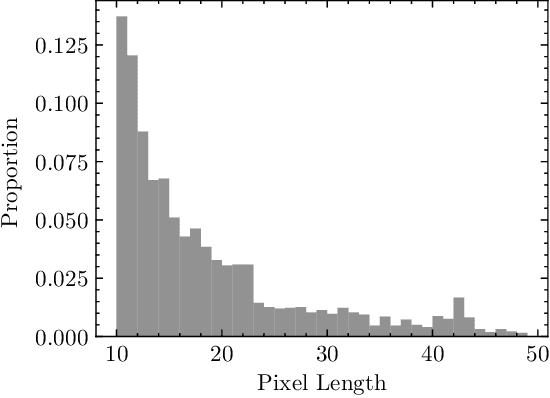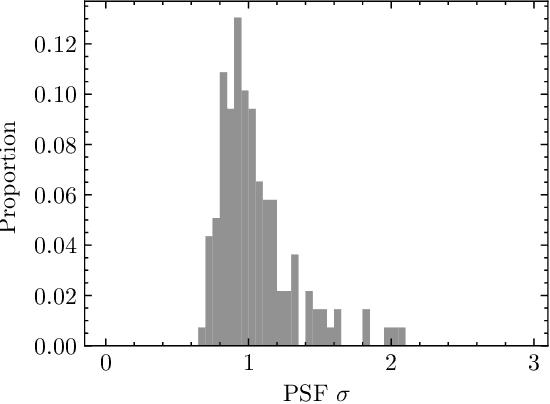Kevin Willis
Discovery of Small Ultra-short-period Planets Orbiting KG Dwarfs in Kepler Survey Using GPU Phase Folding and Deep Learning Detection System
Dec 28, 2023Abstract:Since the discovery of the first hot Jupiter orbiting a solar-type star, 51 Peg, in 1995, more than 4000 exoplanets have been identified using various observational techniques. The formation process of these sub-Earths remains elusive, and acquiring additional samples is essential for investigating this unique population. In our study, we employ a novel GPU Phase Folding algorithm combined with a Convolutional Neural Network, termed the GPFC method, on Kepler photometry data. This method enhances the transit search speed significantly over the traditional Box-fitting Least Squares method, allowing a complete search of the known KOI photometry data within hours using a commercial GPU card. To date, we have identified five promising sub-Earth short-period candidates: K00446.c, K01821.b, K01522.c, K03404.b, and K04978.b. A closer analysis reveals the following characteristics: K00446.c orbits a K dwarf on a 0.645091-day period. With a radius of $0.461R_\oplus$, it ranks as the second smallest USP discovered to date. K01821.b is a sub-Earth with a radius of $0.648R_\oplus$, orbiting a G dwarf over a 0.91978-day period. It is the second smallest USP among all confirmed USPs orbiting G dwarfs in the NASA Archive. K01522.c has a radius of $0.704 R_\oplus$ and completes an orbit around a Sun-like G dwarf in 0.64672 days; K03404.b, with a radius of $0.738 R_\oplus$, orbits a G dwarf on a 0.68074-day period; and K04978.b, with its planetary radius of $0.912 R_\oplus$, orbits a G dwarf, completing an orbit every 0.94197 days. Three of our finds, K01821.b, K01522.c and K03404.b, rank as the smallest planets among all confirmed USPs orbiting G dwarfs in the Kepler dataset. The discovery of these small exoplanets underscores the promising capability of the GPFC method for searching for small, new transiting exoplanets in photometry data from Kepler, TESS, and future space transit missions.
The GPU Phase Folding and Deep Learning Method for Detecting Exoplanet Transits
Dec 04, 2023



Abstract:This paper presents GPFC, a novel Graphics Processing Unit (GPU) Phase Folding and Convolutional Neural Network (CNN) system to detect exoplanets using the transit method. We devise a fast folding algorithm parallelized on a GPU to amplify low signal-to-noise ratio transit signals, allowing a search at high precision and speed. A CNN trained on two million synthetic light curves reports a score indicating the likelihood of a planetary signal at each period. GPFC improves on speed by three orders of magnitude over the predominant Box-fitting Least Squares (BLS) method. Our simulation results show GPFC achieves 97% training accuracy, higher true positive rate at the same false positive rate of detection, and higher precision at the same recall rate when compared to BLS. GPFC recovers 100% of known ultra-short-period planets in Kepler light curves from a blind search. These results highlight the promise of GPFC as an alternative approach to the traditional BLS algorithm for finding new transiting exoplanets in data taken with Kepler and other space transit missions such as K2, TESS and future PLATO and Earth 2.0.
Discovering Faint and High Apparent Motion Rate Near-Earth Asteroids Using A Deep Learning Program
Aug 19, 2022



Abstract:Although many near-Earth objects have been found by ground-based telescopes, some fast-moving ones, especially those near detection limits, have been missed by observatories. We developed a convolutional neural network for detecting faint fast-moving near-Earth objects. It was trained with artificial streaks generated from simulations and was able to find these asteroid streaks with an accuracy of 98.7% and a false positive rate of 0.02% on simulated data. This program was used to search image data from the Zwicky Transient Facility (ZTF) in four nights in 2019, and it identified six previously undiscovered asteroids. The visual magnitudes of our detections range from ~19.0 - 20.3 and motion rates range from ~6.8 - 24 deg/day, which is very faint compared to other ZTF detections moving at similar motion rates. Our asteroids are also ~1 - 51 m diameter in size and ~5 - 60 lunar distances away at close approach, assuming their albedo values follow the albedo distribution function of known asteroids. The use of a purely simulated dataset to train our model enables the program to gain sensitivity in detecting faint and fast-moving objects while still being able to recover nearly all discoveries made by previously designed neural networks which used real detections to train neural networks. Our approach can be adopted by any observatory for detecting fast-moving asteroid streaks.
 Add to Chrome
Add to Chrome Add to Firefox
Add to Firefox Add to Edge
Add to Edge